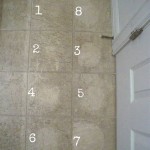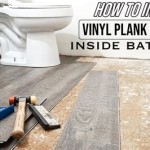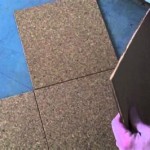Vinyl Flooring Over Carpet Underlay: A Comprehensive Guide
Understanding the suitability of installing vinyl flooring over carpet underlay is a common question for homeowners considering flooring renovations. While aiming to save time and money by avoiding underlay removal is understandable, it’s crucial to approach this decision with a clear understanding of the potential consequences. This article provides a detailed examination of the factors involved in laying vinyl flooring over carpet underlay, outlining the potential benefits, drawbacks, and alternative solutions.
Vinyl flooring, known for its durability, water resistance, and ease of maintenance, is an increasingly popular choice for various rooms in a home, including kitchens, bathrooms, and basements. Carpet underlay, on the other hand, is designed to provide cushioning, insulation, and noise reduction beneath carpet. The contrasting properties of these materials necessitate careful consideration before attempting to combine them in a single flooring installation.
The primary concern when considering this method is the potential impact on the long-term performance and appearance of the vinyl flooring. Vinyl flooring requires a stable, flat, and solid subfloor for proper installation and optimal performance. Deviations from these requirements can lead to a range of problems, from cosmetic issues like indentations and unevenness to more serious structural concerns like cracking and buckling.
Understanding the Potential Issues
One of the primary concerns is the compressibility of carpet underlay. Unlike a solid subfloor, carpet underlay is designed to compress under pressure. Placing a rigid material like vinyl flooring on top of this compressible layer can result in uneven wear and tear. Areas that experience higher foot traffic may compress the underlay more than other areas, leading to dips and inconsistencies in the vinyl surface. This, in turn, can accelerate wear and potentially damage the vinyl flooring over time.
Another significant problem is the potential for moisture retention. Carpet underlay is often porous and can trap moisture, especially in humid environments or areas prone to spills. When vinyl flooring is installed on top, it creates a barrier that prevents the moisture from evaporating. This trapped moisture can lead to the growth of mold and mildew, which can damage the underlay, the vinyl flooring, and potentially even the subfloor beneath. Mold growth can also lead to unpleasant odors and pose health risks to occupants.
Furthermore, the softness of the carpet underlay can compromise the stability of the vinyl flooring. Vinyl flooring relies on a solid base to prevent movement and flexing. When installed over a compressible underlay, the flooring may flex excessively, particularly in areas with heavy foot traffic or furniture. This excessive flexing can weaken the flooring material and lead to cracks, tears, or separation of the seams. It can also make the floor feel unstable and uncomfortable to walk on.
The type of vinyl flooring being used is also relevant. Thinner, more flexible vinyl options are even more susceptible to issues when installed over carpet underlay. Thicker, more rigid vinyl flooring might offer slightly better performance, but the underlying problems associated with compressibility and moisture retention will still persist.
Exploring Limited Circumstances Where It Might Be Considered
While generally discouraged, there might be very specific and limited scenarios where installing vinyl flooring over carpet underlay *might* be considered. These instances typically involve a very thin, dense, and stable type of carpet underlay, coupled with specific types of vinyl flooring. It is vital to emphasize again that this is generally not recommended, and professional consultation is always advised.
Specifically, if a very thin layer of primarily felt-based carpet underlay is already present, and is firmly adhered to the subfloor, and is in excellent condition (completely dry, no signs of mold or degradation), it *might* be possible to install a thick, high-quality vinyl plank flooring with a rigid core. The underlay must be extremely stable and offer minimal compression. Additionally, the manufacturer of the vinyl flooring must explicitly approve the installation method and guarantee its performance when installed over such an underlay. Thorough preparation and testing are crucial to ensure the underlay is suitable.
Another scenario, though even less advisable, could involve using a specialized type of underlay specifically designed for use under vinyl flooring. These underlays typically are much denser and less compressible than standard carpet underlays. They offer a more stable base while still providing a degree of sound absorption and thermal insulation. However, even with these specialized underlays, it is essential to carefully follow the manufacturer's instructions and ensure compatibility with the specific type of vinyl flooring being used.
In all these limited cases, it is crucial to thoroughly assess the existing underlay for any signs of damage, moisture, or degradation. Any imperfections must be addressed before installing the vinyl flooring. Furthermore, a moisture test should be conducted to ensure the subfloor and underlay are completely dry. It is also highly recommended to consult with a flooring professional to assess the specific situation and provide guidance on the best course of action. Neglecting these precautions can lead to costly problems down the line.
Even in these limited scenarios, the lifespan and performance of the vinyl flooring may still be compromised compared to installing it directly on a properly prepared subfloor. The manufacturer's warranty may also be voided if the flooring is not installed according to their specifications. Therefore, a thorough cost-benefit analysis should be conducted before proceeding with this approach.
Alternative Solutions and Proper Installation Methods
The most reliable and recommended approach is to remove the existing carpet underlay entirely. This ensures a clean, stable, and dry surface for the vinyl flooring. Removing the underlay also allows for a thorough inspection of the subfloor to identify and address any potential problems, such as cracks, unevenness, or moisture issues. Repairing these issues before installing the vinyl flooring will help to ensure a long-lasting and aesthetically pleasing result.
After removing the carpet and underlay, the subfloor should be thoroughly cleaned and leveled. Any imperfections, such as dips or bumps, should be filled with a self-leveling compound or patched with a suitable patching material. This creates a smooth and even surface for the vinyl flooring, which is essential for preventing uneven wear and tear.
Once the subfloor is properly prepared, a new underlayment specifically designed for use with vinyl flooring can be installed. These underlayments are typically denser and less compressible than carpet underlays. They provide a stable base for the vinyl flooring and can offer additional benefits such as sound absorption and thermal insulation. Selecting the correct underlayment for the type of vinyl flooring being used is crucial for optimal performance.
Different types of vinyl flooring require different installation methods. Sheet vinyl is typically glued down to the subfloor, while vinyl planks can be installed using a click-lock system or glued down. Following the manufacturer's instructions carefully is essential for ensuring a proper installation and preventing problems like buckling, gapping, or seam separation.
For glue-down installations, the correct type of adhesive must be used. The adhesive should be compatible with both the vinyl flooring and the subfloor. Applying the adhesive evenly and allowing it to dry properly before installing the flooring is crucial for achieving a strong and durable bond. For click-lock installations, ensuring the planks are properly aligned and securely locked together is essential for preventing gaps and movement.
In conclusion, while installing vinyl flooring over carpet underlay may seem like a convenient and cost-effective solution, the potential drawbacks and risks generally outweigh the benefits. The compressibility and moisture retention of carpet underlay can compromise the stability, appearance, and longevity of the vinyl flooring. Removing the existing underlay and properly preparing the subfloor is the most reliable and recommended approach for achieving a long-lasting and aesthetically pleasing result. Consulting with a flooring professional is always advisable to assess the specific situation and determine the best course of action.

The Best Vinyl Flooring For Over Carpet

Installing Vinyl Plank Flooring Over Carpet Padding

The Best Vinyl Flooring For Over Carpet

How To Install Temporary Flooring Over Carpet Inc

Installing Tiles Over Carpet

What Kind Of Flooring Options Can You Put Over Carpet

Can You Install Rubber Gym Flooring Over Carpet Inc

Can You Use Carpet Underlay For Laminate Here S The Truth

How To Install Temporary Flooring Over Carpet Inc

Is It Possible To Install Wood Flooring Over Carpet Singapore
Related Posts








